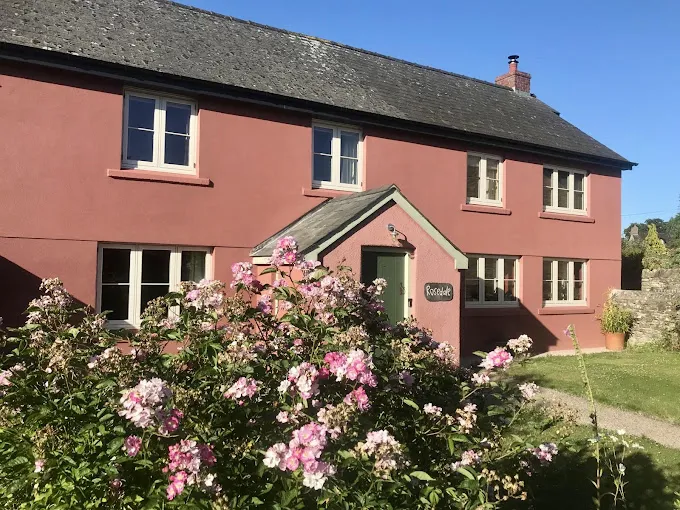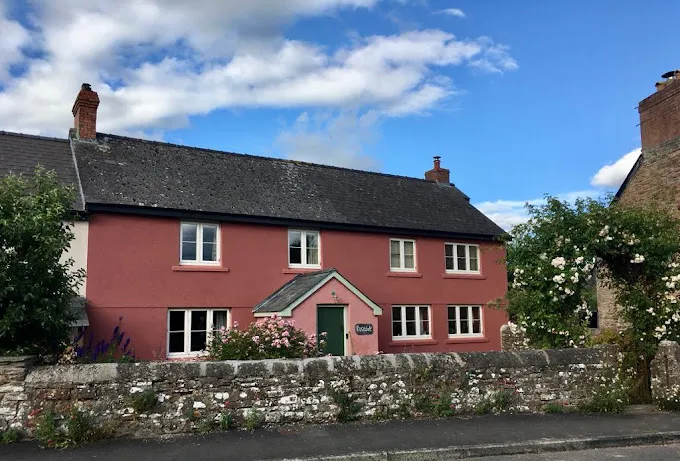Master Spray On Render DIY: Expert Tips for Success
Many homeowners consider spray on render diy projects as an attractive way to transform their property’s exterior while potentially saving on professional labour costs. However, this approach requires careful consideration of the complexities involved, equipment needs, and technical expertise required for successful results.
While spray rendering technology offers faster application compared to traditional hand methods, achieving professional-quality results demands proper preparation, suitable equipment, and extensive knowledge of render systems. Understanding these requirements helps property owners make informed decisions about their rendering projects.
Understanding Spray Rendering Technology
Spray rendering involves applying render materials through specialized equipment that atomizes the mixture for even distribution across wall surfaces. This method requires specific consistency in the render mix, appropriate pressure settings, and consistent technique to avoid common issues like uneven coverage or texture variations.
Professional spray equipment differs significantly from basic DIY tools. Industrial spray systems maintain consistent pressure and flow rates essential for proper render application. The equipment also requires regular maintenance and calibration to ensure optimal performance throughout large-scale applications.
Call Us
Weather conditions play a crucial role in spray rendering success. Temperature, humidity, and wind conditions all affect how the render adheres and cures. South Wales coastal conditions particularly demand careful timing to avoid issues with salt air and moisture levels during application.
Essential Equipment Requirements
Professional spray rendering requires substantial equipment investment including high-capacity compressors, specialized spray guns, mixing equipment, and safety gear. This equipment typically costs thousands of pounds and requires training for safe operation.
Many DIY enthusiasts underestimate the learning curve associated with spray equipment operation. Proper technique development takes time and practice, often resulting in inconsistent finishes when attempted without sufficient experience.
Preparation Requirements for Spray On Render DIY
Successful render application begins with thorough substrate preparation. Wall surfaces must be clean, sound, and appropriately primed depending on the existing material. Older properties often require additional preparation work to address structural issues or previous render failures.
Masking and protection work becomes more extensive with spray application compared to hand rendering. Overspray can travel considerable distances, requiring careful protection of windows, doors, landscaping, and neighboring properties. This preparation often takes longer than the actual rendering work.
Substrate assessment requires expertise to identify potential problems like dampness, structural movement, or incompatible existing materials. These issues must be resolved before render application to prevent future failures.
Material Selection Challenges
Different render systems have varying requirements for spray application. Not all renders are suitable for spray application, and modifying traditional mixes for spray use can affect performance characteristics.
Understanding compatibility between primers, renders, and finishes requires technical knowledge typically gained through professional training and experience. Incorrect combinations can lead to adhesion failures or performance issues.
Common Spray On Render DIY Pitfalls
Many DIY attempts result in uneven coverage patterns that become apparent once the render has dried. These issues are difficult to correct without removing and reapplying sections, often creating visible patch marks in the final finish.
Texture consistency requires steady technique and appropriate equipment settings. Variations in spray distance, speed, or pressure create noticeable differences in the finished surface that detract from the overall appearance.
Timing between coats becomes critical with spray application. Moving too quickly can result in inadequate coverage, while working too slowly may create lap marks where wet and partially dried render meet.
Safety Considerations
Spray rendering involves significant safety hazards including respiratory exposure to airborne particles, potential eye injuries from overspray, and risks associated with working at height with bulky equipment.
Professional-grade protective equipment is essential but often overlooked by DIY enthusiasts. Inadequate protection can result in serious health consequences from prolonged exposure to render materials.
| Aspect | DIY Approach | Professional Service |
|---|---|---|
| Equipment Investment | High initial cost for quality equipment | No equipment purchase required |
| Time Investment | Extensive preparation and learning curve | Efficient completion with experienced crew |
| Result Quality | Variable depending on skill level | Consistent professional finish guaranteed |
| Warranty Coverage | No warranty on workmanship | Comprehensive workmanship and material warranties |
| Problem Resolution | DIY troubleshooting and repair costs | Professional support and rectification included |
When Professional Services Make Sense
Complex projects involving multiple render types, external wall insulation integration, or challenging architectural details benefit from professional expertise. These situations require specialized knowledge and experience to achieve optimal results.
Properties with existing render problems need proper diagnosis before new application. Professional assessment identifies underlying issues that must be addressed to prevent recurring problems with new render systems.
Large-scale projects become increasingly difficult for DIY approaches due to the physical demands and time requirements. Professional teams can complete work efficiently while maintaining consistent quality across entire building facades.
Professional Advantages
Experienced rendering contractors bring specialized knowledge about local conditions, appropriate material selection, and proven application techniques. This expertise often results in better long-term performance compared to DIY attempts.
Professional services include proper preparation work, quality materials, and comprehensive warranties that provide peace of mind for property owners. This coverage protects against potential issues that could prove costly with DIY projects.
Coloured Rendering South Wales Professional Approach
At Coloured Rendering South Wales, we understand the appeal of spray on render diy projects but also recognize the complexities involved in achieving professional results. Our team combines over 25 years of experience with modern spray rendering technology to deliver consistent, high-quality finishes for properties throughout South Wales.
Our professional approach begins with thorough property assessment and appropriate system specification based on building type, location, and client requirements. We use industrial-grade spray equipment maintained to manufacturer standards, ensuring optimal performance and consistent results.
We offer comprehensive consultations where we explain the rendering process, discuss material options, and provide detailed quotations. This service helps property owners understand what’s involved in professional rendering and make informed decisions about their projects.
“Excellent finish. Geoff worked in my house, both an outside render and throughout the house. Couldn’t be happier with the finish and completely reliable,” notes David Lamb in his Google review, highlighting the quality results achievable through professional service.
For property owners interested in rendering projects, we recommend contacting our team for a consultation where we can assess your specific requirements and provide expert guidance on the most appropriate solutions.
Cost-Benefit Analysis Considerations
While spray on render diy might appear cost-effective initially, hidden expenses often emerge during project execution. Equipment rental or purchase, materials, preparation supplies, and potential rectification work can quickly exceed professional service costs.
Professional services provide value through efficient completion, quality materials at trade prices, comprehensive warranties, and expert problem-solving when challenges arise. This complete package often represents better value compared to DIY approaches when all factors are considered.
Long-term performance differences between DIY and professional applications can significantly impact overall project costs. Poor application resulting in premature failure requires complete re-rendering, potentially costing more than initial professional installation.
Project Timeline Realities
DIY rendering projects typically take much longer than anticipated due to learning curves, weather delays, and the physical demands of the work. Professional teams complete projects efficiently, minimizing disruption to property occupants.
Weather dependencies become more problematic for extended DIY timelines compared to focused professional completion schedules that can adapt to suitable weather windows.
Maintenance and Longevity Factors
Professional rendering applications typically provide better long-term performance due to proper preparation, material selection, and application techniques. This performance advantage translates to lower maintenance requirements and extended service life.
DIY applications may require more frequent maintenance or earlier replacement due to application issues that affect render performance. Understanding these long-term implications helps inform project planning decisions.
Modern render systems require specific maintenance approaches to preserve their performance characteristics. Professional installation includes proper guidance on maintenance requirements and techniques to ensure optimal longevity.
Weather Resistance Performance
South Wales coastal conditions demand renders that can withstand salt air, driving rain, and temperature variations. Professional application ensures proper system selection and installation techniques that maximize weather resistance performance.
Incorrect application can compromise weather resistance even with high-quality materials, leading to premature deterioration and potential structural damage from water ingress.
Making Informed Project Decisions
Successful rendering projects require careful evaluation of property requirements, available resources, and expected outcomes. Understanding the complexities involved in spray on render diy helps property owners make appropriate decisions for their specific situations.
Professional consultation provides valuable insights into project requirements, material options, and potential challenges specific to each property. This information enables informed decision-making about the most appropriate project approach.
Consider factors including project scale, complexity, available time, equipment access, and desired quality standards when evaluating DIY versus professional options. Each situation presents unique considerations that influence the most suitable approach.
The expertise required for successful spray rendering extends beyond equipment operation to include substrate preparation, material compatibility, weather timing, and quality control throughout the application process. These skills develop through extensive experience and professional training.
For property owners considering spray rendering projects, we recommend exploring both DIY and professional options to understand the full scope of requirements and make the most appropriate choice for your specific circumstances. Contact our experienced team to discuss your rendering needs and receive expert guidance on achieving optimal results for your South Wales property.
Remember that successful rendering projects require proper planning, quality materials, appropriate techniques, and ongoing maintenance to achieve the enhanced property appearance and protection that motivates these investments.


